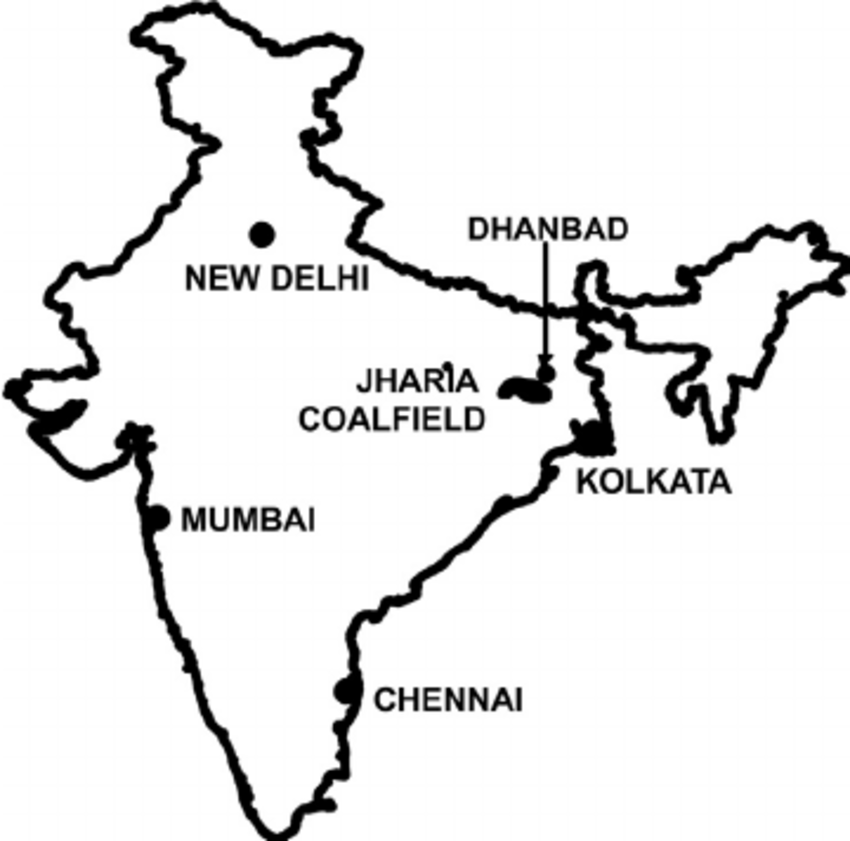Revised Jharia Master Plan (JMP) | 26 Jun 2025
Why in News?
The Cabinet Committee on Economic Affairs (CCEA) approved the Revised Jharia Master Plan (JMP) for addressing issues related to fire, land subsidence, and rehabilitation of affected families at the Jharia coalfield in Jharkhand.
Key Points
About Revised Jharia Master Plan (JMP)
- Total Financial Outlay: The total financial outlay for the implementation of the revised plan is ₹5,940.47 crore.
- The phase-wise approach will prioritize handling fire, subsidence, and the rehabilitation of families from the most vulnerable sites.
- Livelihood Grant and Support: The revised plan provides a livelihood grant of ₹1 lakh to both legal title holders (LTH) and non-legal title holders (non-LTH) families.
- In addition, credit support of up to ₹3 lakh will be available through an institutional credit pipeline for both LTH and non-LTH families.
- The plan focuses on generating sustainable livelihoods through targeted skill development programs and income-generating opportunities to ensure economic self-reliance for the rehabilitated families.
- Infrastructure Development: The resettlement sites will be developed with essential infrastructure and amenities, including roads, electricity, water supply, sewerage, schools, hospitals, skill development centers, community halls, and other common facilities.
- Implementation and Support: The implementation of these provisions will be carried out in accordance with the recommendations of the Committee for Implementation of the Revised Jharia Master Plan.
- To support livelihood initiatives, the Jharia Alternative Livelihoods Rehabilitation Fund will be established, promoting livelihood-related activities.
- Skill development programs will also be conducted in collaboration with Multi-Skill Development Institutes operating in the region.
About Jharia Coalfield
- Historical Background: The Jharia Coalfield, located in Jharkhand, India, has been operational since 1916, with coal mining dating back to this period.
- It has faced persistent issues with coal mine fires, particularly due to unscientific mining methods used before nationalization.
- Fires in Jharia: Since the first fire was reported in 1916, Jharia has been plagued by underground coal fires, mainly caused by the unsystematic mining practices of earlier private operators.
- These fires have severely impacted the environment and the local population, causing health hazards, land degradation, and subsidence.
- Nationalization and Government Intervention: After the nationalization of coal mines in India, experts, including a Polish team and Indian specialists, studied the fires in 1978.
- The Government of India constituted a High-Power Committee in 1996 to address fire and subsidence issues in the region.
- Jharia Master Plan (2009): The Jharia Master Plan was approved by the Government of India in 2009 with an estimated investment of Rs. 7112.11 crores.
- The plan aimed to manage coal fires, rehabilitate affected communities, and ensure safe coal extraction, spanning a ten-year period with a two-year pre-implementation phase.
- Post expiration of the Master Plan in 2021, the Ministry of Coal continued to monitor and fund fire management and rehabilitation projects.
- A committee in 2022 recommended further actions to extinguish fires, offer compensation, and provide essential infrastructure for resettled families.
- Progress in Fire Management: Through scientific measures and technology, the number of fire sites in Jharia was reduced from 77 to 27.
- The fire-affected area shrunk from 17.32 sq. km to 1.80 sq. km by implementing techniques such as surface sealing, trenching, and inert gas infusion.
- Rehabilitation and Resettlement: The plan focused on relocating families affected by fire and subsidence, with BCCL (Bharat Coking Coal Limited) constructing houses for the displaced population.
- Rehabilitation faced resistance from landowners, and difficulties arose due to the lack of a legal framework for land rights transfer, complicating resettlement efforts.
- Technological challenges in assessing underground fires and public skepticism about land acquisition for coal extraction added to the complexity.
- Coal Extraction:
- The region holds substantial coal reserves, with approximately 43 million tons of coal extracted as of June 2023.
- Coal extraction remains a priority, with ongoing efforts to balance environmental and safety concerns with production goals.

